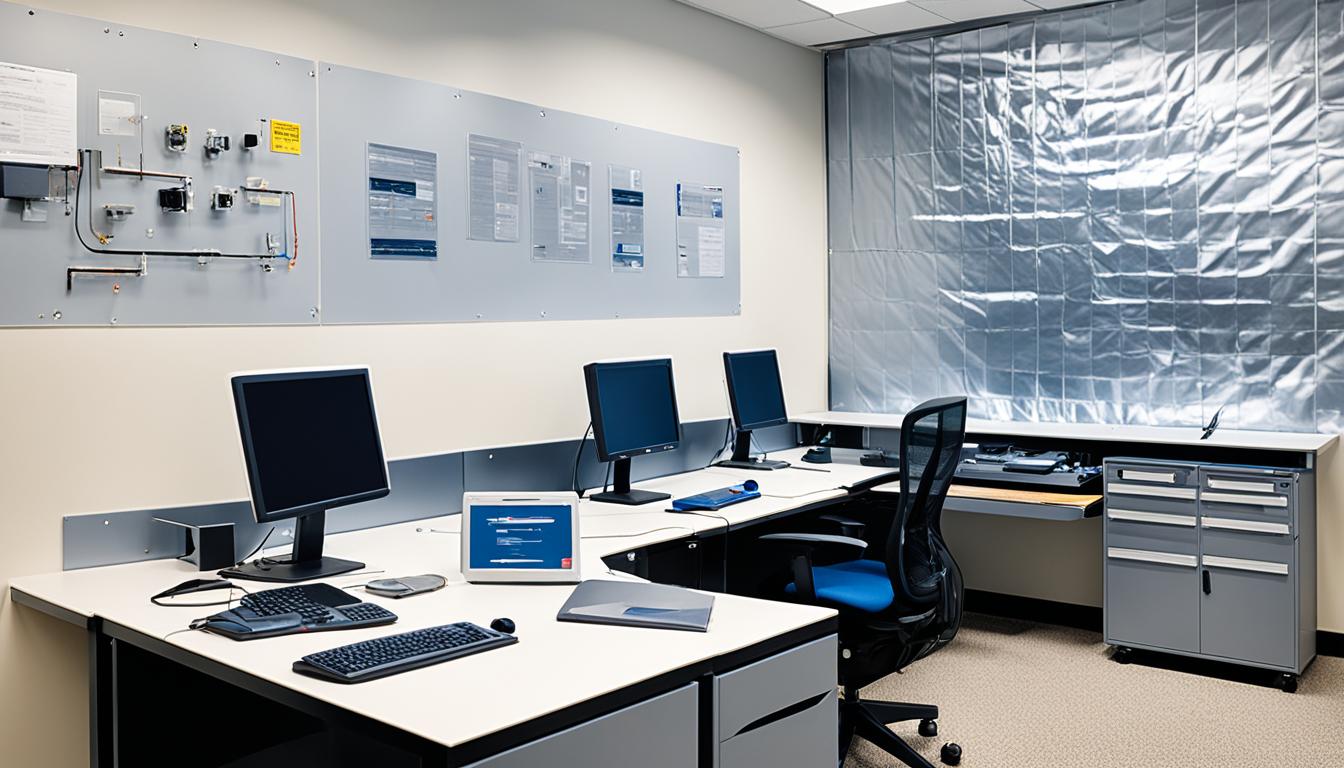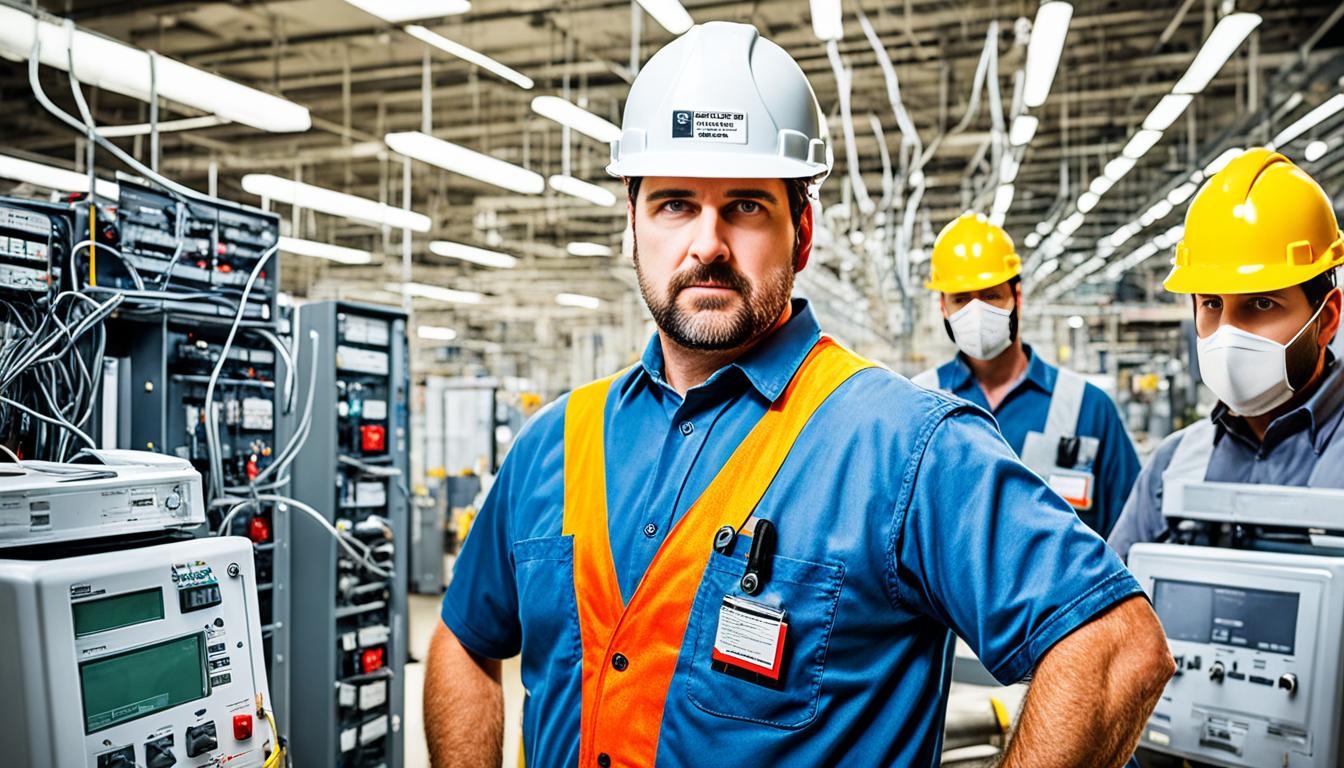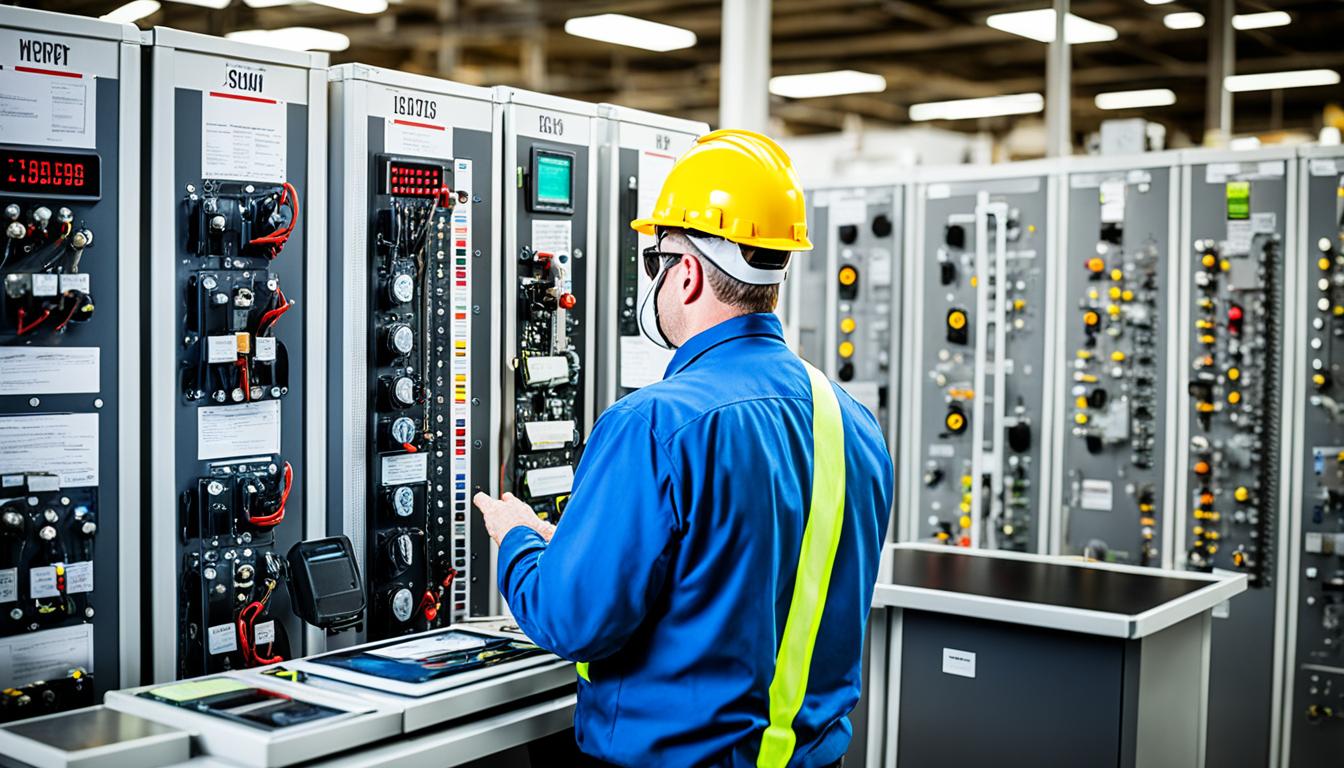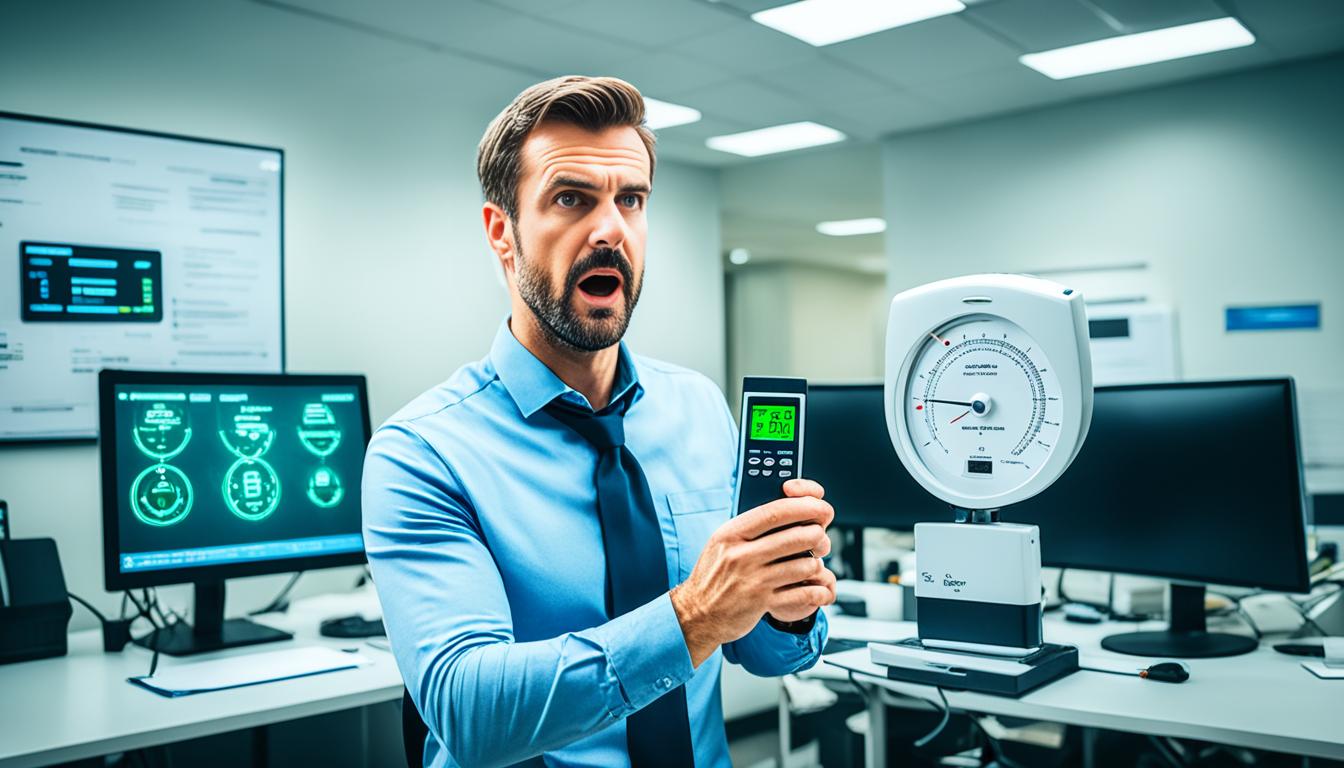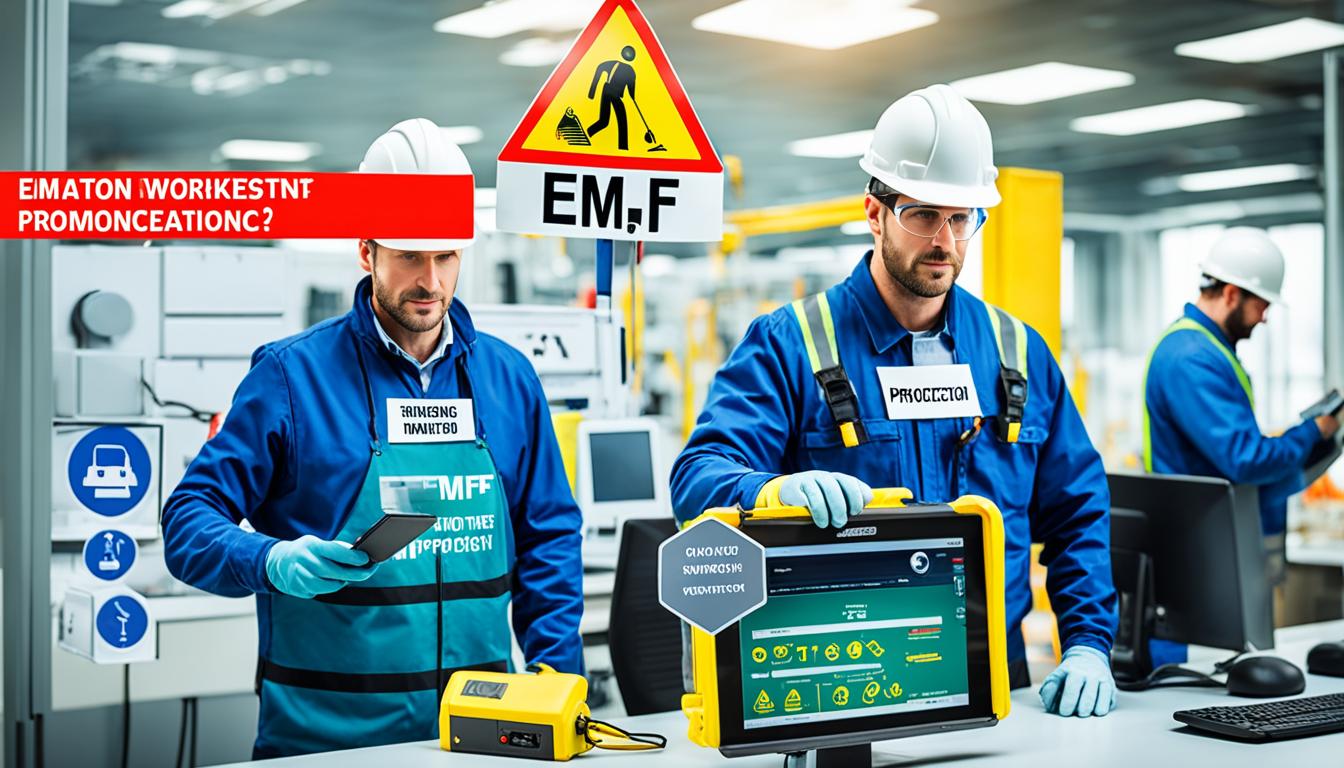Disclosure: This Post Contains Affiliate Links; We earn a commission on purchases.
The Safety, Health and Welfare at Work (Electromagnetic Fields) Regulations 2016 (S.I. No. 337 of 2016) provide guidelines for employers to ensure an EMF-safe work environment. These regulations aim to protect employees from the harmful effects of electromagnetic fields (EMFs) generated by electrical devices and equipment in the workplace. Employers have the responsibility to identify sources of EMFs, assess employee exposure, and implement measures to minimize risks. This guide will provide practical tips and strategies for employers to create a safe working environment free from excessive EMF exposure.
Key Takeaways:
- Understand the regulations and guidelines for creating an EMF-safe work environment.
- Identify sources of EMFs in the workplace and evaluate potential risks.
- Implement appropriate control measures to minimize employee exposure.
- Provide comprehensive information and training to employees about EMF safety.
- Protect vulnerable employees by implementing additional control measures.
Understanding Electromagnetic Fields in the Workplace
Electromagnetic fields (EMFs) are a common presence in most workplaces, generated whenever electricity is used. While the majority of EMF sources do not pose a significant risk to employees, there are situations where exposure to high field strengths can be a concern. To ensure a safe working environment free from excessive EMF exposure, it is essential for employers to understand the different types of EMFs and their potential risks.
Types of Electromagnetic Fields
There are various types of EMFs that employers should be aware of:
- Static magnetic fields: These are emitted by permanent magnets or direct currents.
- Low-frequency fields: Common sources include power lines, electrical and electronic devices, and certain machinery.
- Intermediate-frequency fields: These may be generated by welding equipment, induction heaters, and some medical devices.
- Radiofrequency fields: Produced by wireless communication devices, including cell phones, Wi-Fi routers, and microwave ovens.
By identifying the sources of EMFs in the workplace, employers can better evaluate the potential risks and develop effective strategies to shield employees from excess exposure. Implementing suitable EMF shielding measures and following safety guidelines is crucial for maintaining a healthy work environment.
EMF Exposure Reduction Strategies
To reduce employee’s EMF exposure in the workplace, employers can implement the following strategies:
- Locate workstations away from sources of high EMF, such as power lines or electrical equipment.
- Use EMF shielding materials, like conductive paints or fabrics, to create barriers between employees and EMF-emitting devices.
- Ensure proper grounding and shielding of electrical equipment to minimize EMF emissions.
- Promote the use of wired communication devices instead of wireless alternatives to reduce exposure to radiofrequency fields.
- Encourage employees to take regular breaks from working near EMF-emitting devices.
By employing these exposure reduction strategies, employers can minimize the potential health risks associated with EMF exposure and create a safer work environment for their employees.
| EMF Exposure Reduction Strategies | Benefits |
|---|---|
| Locate workstations away from high EMF sources | – Reduces employee exposure to EMFs – Minimizes health risks |
| Use EMF shielding materials | – Creates a protective barrier against EMF emissions – Provides a safer working environment |
| Ensure proper grounding and shielding of electrical equipment | – Minimizes EMF emissions from equipment – Reduces employee exposure |
| Promote the use of wired communication devices | – Reduces exposure to radiofrequency fields – Decreases potential health risks |
| Encourage regular breaks from working near EMF-emitting devices | – Allows for recovery from potential EMF exposure – Enhances employee well-being |
Compliance with the Safety, Health and Welfare Regulations
The Safety, Health and Welfare at Work (Electromagnetic Fields) Regulations 2016 are in place to ensure the protection of employees from excessive EMF exposure. These regulations outline specific requirements that employers must comply with in order to maintain a safe and healthy work environment.
One of the key aspects of compliance is the assessment of risks and determination of exposure levels. Employers are responsible for identifying potential sources of EMFs in the workplace and evaluating the risks associated with them. This assessment helps in understanding the extent of exposure and enables the implementation of appropriate mitigation measures.
Furthermore, the regulations emphasize the importance of provisions aimed at avoiding risks. This includes implementing control measures, such as EMF shielding and reducing exposure, to ensure that employees are not exposed to EMFs above the specified limits. Employers need to prioritize these measures to safeguard the well-being of their workforce.
Employee information, training, and consultation are also key components of compliance with these regulations. Employers are required to provide comprehensive information about EMF safety to their employees. This includes educating them about the risks of EMF exposure, the control measures in place, and how to use any personal protective equipment effectively.
Moreover, regular training and consultation sessions should be conducted to ensure that employees are fully aware of the EMF mitigation measures and can actively participate in maintaining a safe work environment. This promotes a culture of awareness and empowers employees to take necessary precautions in their daily work routines.
Health surveillance is another important aspect emphasized by these regulations. Employers must establish a system for monitoring the health of employees who may be exposed to higher levels of EMFs. This surveillance helps in identifying any adverse health effects early on and allows for appropriate actions to be taken to mitigate further risks.
It’s important to note that there may be exemptions applicable to certain situations or industries. Employers should be aware of these exemptions and ensure that they are compliant with the relevant regulations specific to their sector.
By upholding these regulations and promoting employer EMF awareness, businesses can implement effective EMF mitigation measures in the workplace. This proactive approach not only ensures compliance with the law but also prioritizes the health and well-being of employees.
Key Points:
- Complying with the Safety, Health and Welfare Regulations is crucial for protecting employees from excessive EMF exposure.
- Employers must assess risks, determine exposure levels, and implement mitigation measures to reduce EMF exposure.
- Provisions aimed at avoiding risks, including control measures and employee training, are essential for creating an EMF-safe work environment.
- Health surveillance and exemptions may be applicable in certain situations or industries.
Assessing and Managing EMF Risks
Assessing and managing electromagnetic field (EMF) risks is an essential step towards creating a safe work environment that prioritizes employee well-being and workplace safety from EMF. By implementing effective strategies, employers can reduce EMF exposure and ensure a healthy workplace for their employees.
Employers should begin the process by conducting a thorough risk assessment to identify the sources of EMFs within their workplace. This assessment helps determine the potential risks associated with each source and provides insights into employee exposure levels.
Once the sources and risks are identified, employers can evaluate whether the exposure levels exceed the limit values and action levels set by the relevant regulations. This evaluation allows employers to understand the severity of the EMF exposure and take appropriate action to mitigate the risks.
Based on the assessment and evaluation, employers can develop and implement control measures to reduce EMF exposure in the workplace. These measures may include:
- Engineering Controls: Employers can implement shielding techniques, such as enclosures or barriers, to reduce the EMF levels emitted by specific equipment or areas.
- Administrative Controls: This involves implementing policies and procedures to minimize employee exposure to EMFs. For example, employers may restrict access to high EMF areas or schedule tasks to limit exposure duration.
- Personal Protective Equipment (PPE): If other control measures are insufficient, employers should provide appropriate PPE, such as EMF-resistant clothing or protective gear, to reduce employee exposure.
Regular monitoring and review of the implemented control measures are crucial to ensure their ongoing effectiveness. Employers should establish monitoring protocols and conduct periodic assessments to identify any changes in EMF levels or workplace conditions that may require adjustments to the control measures.
“By implementing effective strategies, employers can reduce EMF exposure and ensure a healthy workplace for their employees.”
Creating an EMF-safe work environment requires a proactive and diligent approach from employers. By assessing and managing EMF risks, employers can significantly contribute to the well-being and safety of their employees, fostering a culture of workplace safety from EMF exposure.
Protecting Employees at Risk
Certain employees may be more vulnerable to the effects of EMF exposure, such as pregnant employees and those wearing active or passive implanted medical devices. Employers should take special considerations to protect these workers by implementing additional control measures and providing necessary information, training, and consultation. Employers should also be aware of any specific guidelines or recommendations provided by relevant EU guides and standards to ensure the creation of EMF-safe workspaces for all employees.
When it comes to pregnant employees, the safety and well-being of both the mother and the unborn child should be a top priority. Extra precautions should be taken to minimize their exposure to EMFs. This can be achieved by:
- Providing pregnant employees with EMF shielding clothing or accessories.
- Ensuring that pregnant employees are not assigned to workstations with high levels of EMF exposure.
- Offering alternative work arrangements, such as remote work or job rotation, if necessary.
Employees with active or passive implanted medical devices, such as pacemakers or hearing aids, may also be more susceptible to the effects of EMFs. It is important for employers to:
- Work closely with those employees to understand the specific requirements and limitations of their medical devices.
- Consult with the manufacturer of the medical devices to determine the recommended safe distances from EMF sources.
- Implement additional shielding measures, if needed, to ensure the devices are not affected by EMFs in the workplace.
By taking these precautions and following the employer EMF protection measures and EMF safety guidelines for employers, employers can create an environment that is not only compliant with regulations but also one that prioritizes the health and safety of all employees, including those at higher risk. Creating EMF-safe workspaces is essential to the overall well-being of the workforce and contributes to a positive work environment.
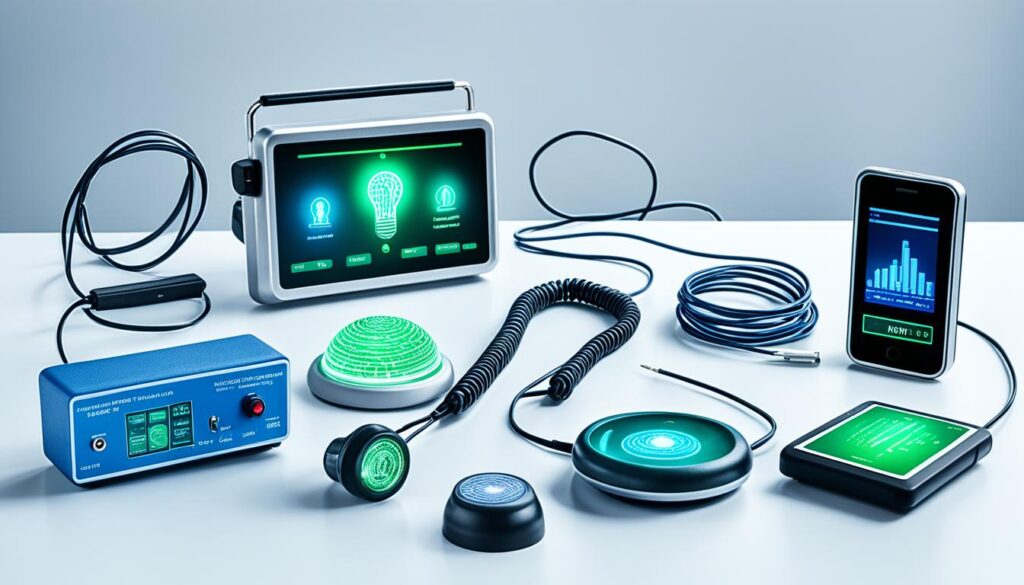
Worker Information and Training
Ensuring the effective implementation of employer EMF protection measures requires providing employees with comprehensive information and training. By educating employees about the potential risks of EMF exposure, the control measures in place, and how to use and maintain any necessary personal protective equipment, employers can empower them to actively participate in creating a safe work environment. Regular information updates and training sessions should be conducted to keep employees informed and aware of the latest EMF safety practices.
To facilitate employee engagement and understanding, employers should provide opportunities for consultation and feedback. This enables employees to ask questions, seek clarification, and share any concerns they may have about EMF exposure. Employee consultation also fosters a collaborative approach to EMF safety, ensuring that employee perspectives and experiences are considered when implementing and refining protection measures.
Training sessions can be conducted through different mediums, such as in-person workshops, online modules, and informative handouts. The training materials should be clear, concise, and accessible, catering to different learning styles and preferences. Employers can also utilize visual aids, such as videos or infographics, to enhance understanding and engagement with the training content.
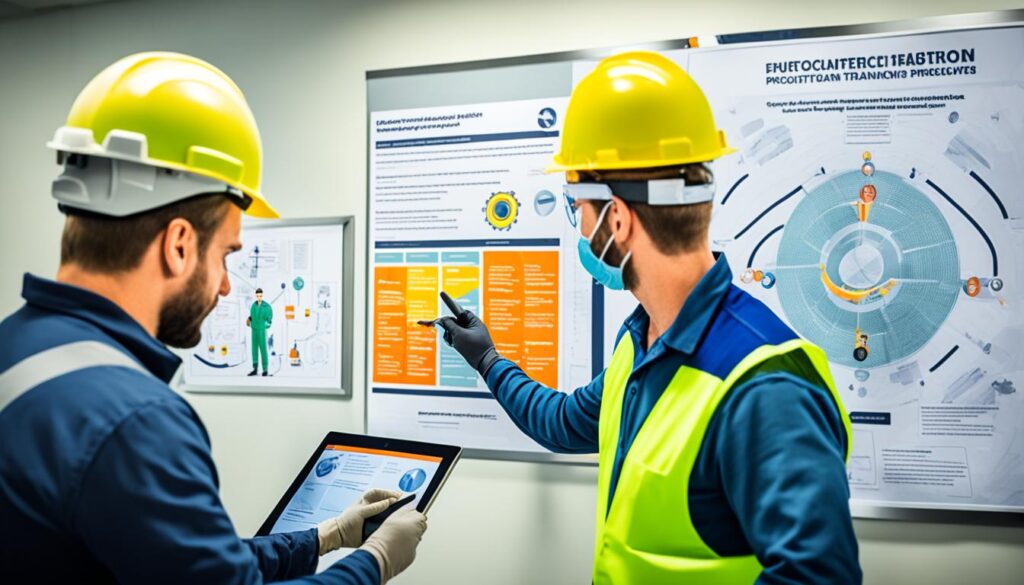
“Employee training and information are essential for creating an EMF-safe workplace. Equipped with knowledge and understanding, employees can actively contribute to maintaining a healthy and protected work environment.”
Promoting Employee Engagement and Participation
Employee engagement plays a crucial role in the successful implementation of EMF protection measures. Employers should encourage employees to report any EMF-related concerns or incidents promptly. This reporting process should be communicated clearly, ensuring that employees know how and where to report any observed risks or issues.
Additionally, regular communication channels, such as meetings or newsletters, can be utilized to update employees on EMF safety initiatives, share success stories, and address any emerging challenges. By fostering a culture of open communication and collaboration, employers can build trust and actively involve employees in the ongoing improvement of EMF protection measures.
| Key Elements of Effective Worker Information and Training |
|---|
| 1. Comprehensive information about EMF exposure risks. |
| 2. Clear instructions on how to use and maintain personal protective equipment. |
| 3. Regular training sessions to update employees on EMF safety practices. |
| 4. Opportunities for consultation and feedback. |
| 5. Encouragement of employee reporting and active participation. |
By prioritizing worker information and training, employers can empower employees to safeguard their health and well-being in the face of potential EMF exposure risks. This collaborative approach ensures that everyone in the workplace is equipped with the necessary knowledge and resources to create an EMF-safe work environment.
Conclusion
Creating an EMF-Safe Work Environment for Employers is crucial for ensuring the health and well-being of employees. By understanding the potential risks associated with EMF exposure and implementing effective control measures, employers can prioritize workplace safety from EMF and protect their workforce.
Compliance with the Safety, Health and Welfare at Work (Electromagnetic Fields) Regulations 2016 is essential. By assessing and managing EMF risks, employers can identify sources of EMFs, evaluate employee exposure levels, and implement appropriate control measures to reduce EMF exposure in the workplace.
Protecting employees at risk, such as pregnant employees or those with implanted medical devices, requires additional measures and the guidance of relevant EU guides and standards. Providing comprehensive information and training to employees ensures their understanding of the potential risks and the correct usage and maintenance of any personal protective equipment required.
By prioritizing the implementation of EMF protection measures, employers demonstrate their commitment to the health and safety of their employees. This not only fosters a safe working environment but also enhances productivity and overall well-being in the workplace. Creating an EMF-Safe Work Environment is an investment that benefits both employers and employees alike.
Source Links
- https://www.hse.gov.uk/pubns/books/hsg281.htm
- https://www.etui.org/sites/default/files/Guide EMF up-dated version 19 June 2015.pdf
- https://www.hsa.ie/eng/publications_and_forms/publications/physical_agents/emf_guidelines_2016.pdf

Subscribe to Our Newsletter

